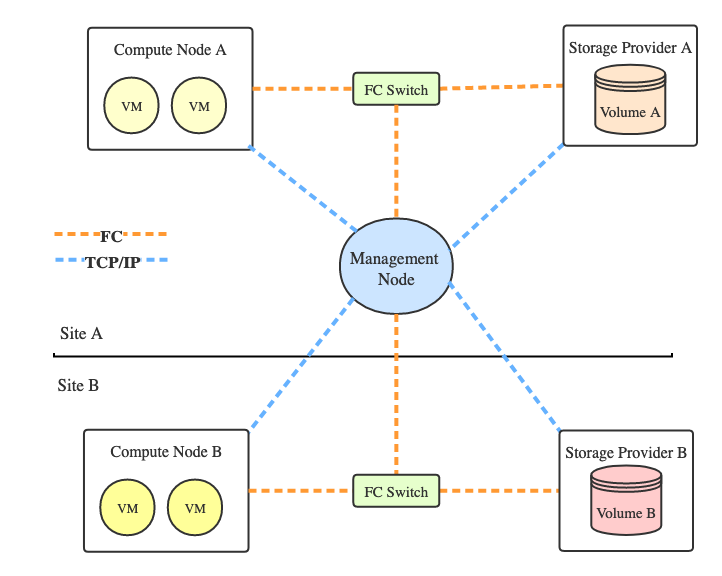Boot From Volume for z/VM
IBM Cloud Infrastructure supports the Boot From Volume functionality on z/VM platform. This functionality not only provides you the ability to use SCSI volume attached through FC protocol as the root disk for deploying virtual machine in IBM Cloud Infrastructure Center, but also provides improvements in management and recovery.
Booting from volume provides the following benefits:
Resiliency: Block Storage (Cinder) is a persistent volume and you can retain it after the server is deleted. You can then use the volume to create a new virtual server.
Scale: If you want to change the size of your virtual server, you can easily delete your existing virtual server and create a new one by using the same volume in Block Storage Service (Cinder).
Note: Provisioning virtual machine from volume in DS8000 storage provider is currently not supported in IBM Cloud Infrastructure Center, only the IBM Storwize Family storage provider is supported.
To use this functionality, special settings are required:
One or more FCP device(s) needs to be setup on the management node, refer to the Setup FCP device(s) for management server for detailed setup steps.
FCP list value must be specified when adding host in IBM Cloud Infrastructure Center. Each virtual machine deployed by booting from volume functionality or with attached data volume would occupy one pair of FCP devices in the list, you need to make sure enough FCP device(s) are contained in this list.
Note:
The number of FCP channels configured in
FCP listcan't exceed 8 if you plan to boot virtual machine from volume because of the length limitation of Linux kernel command line.These FCP devices you specified for the compute node should not be the same ones defined to management node as done in step 1.
Storage provider should be added to IBM Cloud Infrastructure Center by referring to the Add Storage Controller into IBM Cloud Infrastructure Center.
The management node should have TCP/IP connection to the storage provider, so as to communicate with the provider. For example, the management node needs to send volume creation request to the provider.
The image, from which virtual machine is deployed, is uploaded to the management node. The management node should have FC(Fibre Channel) connection to the storage provider, so as to copy the image to the volume(created in previous step). Then the volume will be used as root disk from which virtual machine boots.
Note:
The requirement of FC connection between the management node and storage provider is also true for creating a bootable volume.
As below topology shows, volume_B can not be attached to virtual machine within site_A due to lack of FC connection between them.
